The first thing that outsiders see and evaluate the owner of the apartment or at home input ...
|
|
A cozy and attractive balcony is a wonderful addition to any housing, in ... |
To date built -in lamps for suspended ceilings... |
We glue wide wallpapers with our own hands. How to glue wide wallpapers correctly

Bleing wide wallpapers is a complex, but fairly fast process. This material is characterized by a minimum number of butt joints and excellent performance. Learn about the secrets of working with wide wallpaper and get valuable tips from their gluing specialists.
Table of contents:
- Wide wallpaper: characteristics and advantages
- Preparation of walls for decoration with wide wallpaper
- Tool for working with wide wallpaper
- Choose glue for gluing wide wallpaper
- We glue wide woven wallpapers
Wide wallpaper: characteristics and advantages
Wide wallpaper is called material, the width of the canvas of which is increased to 100 cm. The minimum number of joints on the walls pasted with such wallpaper makes the wall more coordinated and attractive. The installation process of paintings is also simplified, gluing two stripes takes less time than five.
If the area of \u200b\u200bthe room is impressive, then using wide wallpapers you will significantly save. The number of ordinary rolls will be 1.5-2 times higher than wide, and, accordingly, the cost will also increase.
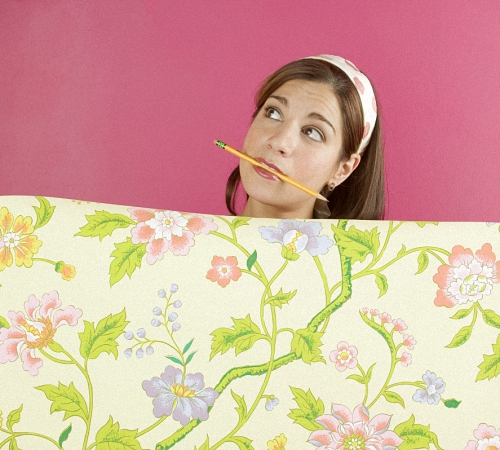
In order to perfectly join the wallpaper among themselves, prepare the walls correctly for work. The presence of the smallest flaws, irregularities or defects will adversely affect the appearance of the resulting coating. Wall decoration with wide wallpaper is carried out with the participation of at least two people, not to cope with this process alone.
We recommend choosing wide wallpapers exclusively in specialized stores. There are exhibition stands, which show several options for wallpaper. Keep in mind that the appearance of the material in the roll will differ from how it looks on the wall. Demand certificates confirming the quality of products - this is the key to a long and successful operation of the coating.
Among the advantages of wide wallpaper we note:
1. Reducing the number of butt joints. The wallpaper was invented precisely for this purpose, the walls are almost seamless. Wide wallpapers form two times less joints than ordinary ones.
2. The ease of installation is achieved by reducing physical efforts to docking the material. The finish time is also reduced.
3. A long period of use. Since wide wallpapers most often produce premium class, they have good operational characteristics.
4. Reducing the cost of wallpaper. The price of wide wallpapers is slightly higher than for standard, and the material is twice as much.
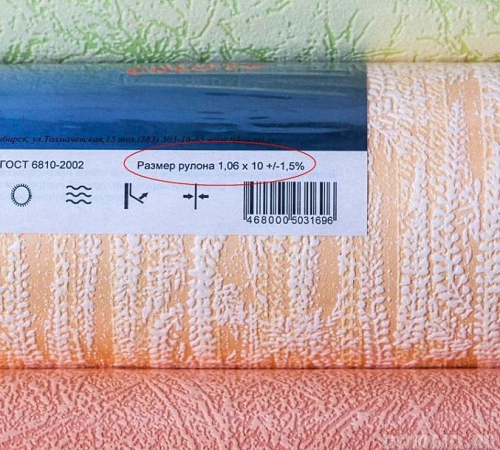
Despite a large number of advantages, wide wallpapers have such shortcomings:
- the need for serious preparation of the surface for work;
- the complexity of the docking, due to increased width;
- the need to buy one or two extra rolls for docking and compensation for undercuted areas;
- The process of gluing is engaged in at least two people, since the wallpaper is quite difficult and need to be quickly leveling.
Preparation of walls for decoration with wide wallpaper
Any wallpaper needs a thorough preparation of the surface before gluing them. There are many reasons for this, we list the main ones:
1. The quality of the clutch of the canvas with the wall determines the correct preparation of the wall for pasting with wallpaper. Porous surfaces are not able to hold the material, so the walls are covered with bubbles, the seams diverge. The wall should have a homogeneous texture for a uniform and solid connection to the canvas.
2. The presence of irregularities on the walls is unacceptable, especially in case of installation of wide wallpaper. In daylight or bright lighting, all irregularities become visible, this negatively affects the appearance of the walls.
3. Antiseptic processing of walls - a mandatory process of their preparation for the installation of wallpaper. The presence of fungus or mold negatively affects not only wallpaper, but also the health of people living in the apartment. The presence of small cracks on the walls leads to moisture or cold air to the wallpaper, as a result, condensation is formed, due to which the quality of the coating is reduced, mold and fungus appear.
4. High -quality prepared walls have high adhesion with canvases. It is this factor that determines the duration of the operation of the coating.
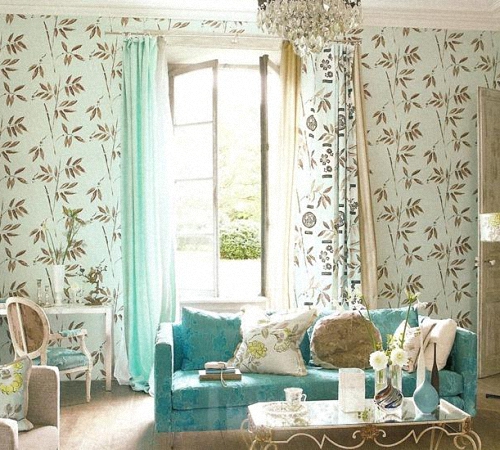
The duration of the operation of wide wallpaper glued on properly prepared walls is 12-15 years or more.
Check out the instructions for preparing walls for wallpapering:
1. Perform the priming of the walls.
We highlight the three reasons why this process is mandatory:
- The primer enters the wall, penetrates inside and strengthens it, thus, the strength of the resulting coating improves;
- The primer prevents glue overrun, reducing the porosity of the wall;
- The primer removes dust, and also disinfects the wall, preventing the development of fungus and mold.
Apply a primer with a brush by pressing well on the surface and rubbing the solution. As a result, white foam is formed. Before starting the next stage, make sure that the solution is completely dried.
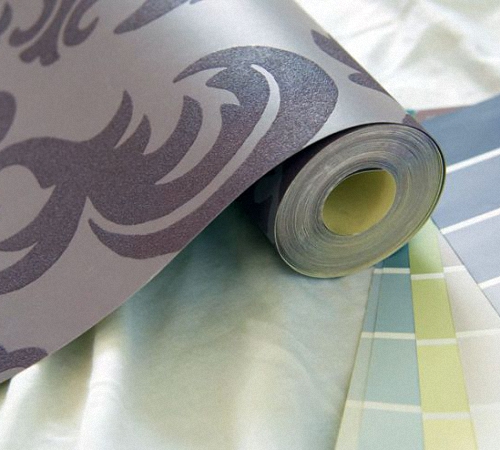
2. Remove cracks and potholes, if any.
If there is a crack on the wall, expand it by 1-2 cm, cover it with a primer, and after drying it, fill it with a cement mortar or tile glue. Cover the surface again with a primer.
If there are more than five cracks on the wall, completely remove the finish from the wall and re -plaster the walls.
3. At the next stage - apply putty on the walls.
This process is mandatory in preparing walls for wallpaper gluing. Putting first of all reduces the roughness of the wall, increasing the clutch between it and the wallpaper. The putty smooths out irregularities. The material is applied to the wall with special spatulas in 3-4 entry with preliminary drying of the layers. Additionally, after applying each putty layer, the wall is covered with a primer. Thus, its strength increases, porosity decreases and dust is removed. Each of the layers of putty is polished by sandpaper or abrasive nets. As a result, it turns out a perfectly even coating, ready to glue wallpaper.
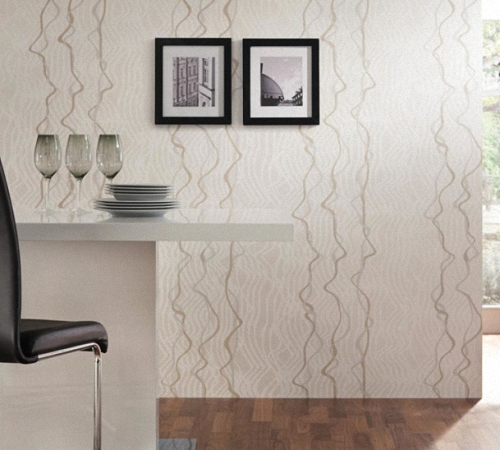
Tool for working with wide wallpaper
The beginning of successful work on gluing wide wallpaper is to compile a list of all necessary tools. Thus, the work will pass quickly and efficiently. The appearance of drafts when gluing wallpaper is unacceptable, so the entire tool should be in the room and at hand.
With the help of a painting spatula, excess wallpaper is cut at the edges. The optimal tool width is 300 mm. Press the spatula tightly to the junction of the wall with the ceiling and click on it. Remove the remains of the wallpaper with a clerical knife. Choose a knife with broken blades. Thus, after the blade is blunting, you just need to break it off.
The docking roller is used to roll joints between the wallpaper. It has the shape of a plastic conical roller, hides visible joints. Roll up embossed wallpapers carefully, as there is a risk of damage to their appearance.
Maslar glue is placed in a special plastic bath. To apply the adhesive composition on the wall and wallpaper, a vill roller is used. In addition, the container and roller will be required to apply a primer to the wall.
It is necessary to breed wallpaper glue in a bucket or any other plastic container of a suitable size. Before using the glue, carefully read the instructions from the manufacturer.
The evenness of wallpaper gluing is controlled by a plumb line and a building level. The canvases should be installed on the wall with maximum verticality. To cover inaccessible places with wallpaper glue, prepare a small brush with an optimal width of about 5 cm.
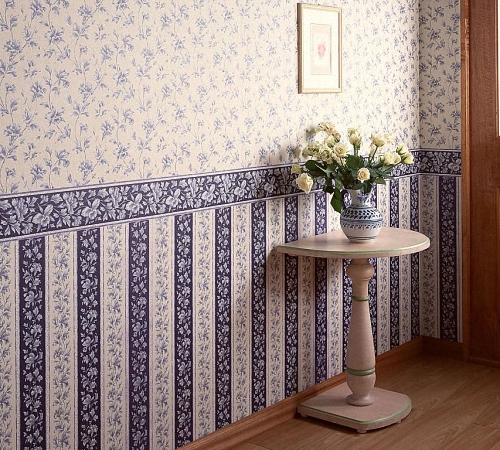
The construction roulette will help to measure the necessary length of the canvas for the wall, it is especially convenient to use it for wallpaper that do not join each other. A soft light rag will help to remove excess glue from the wallpaper. Some wallpaper options imply the use of a wet rag, for others you will need dry.
Scissors for cutting wallpaper should be large and sharp. The option of using a spatula and a stationery knife is possible. The choice of one or another option depends on experience in conducting such work and individual preferences.
After gluing the canvas on the wall, the excess air is removed with a clamping spatula. The tool for ironing inaccessible places is especially convenient.
For free access to any point in the wall, use a stepladder. They are wooden, steel or aluminum. In the absence of this item, it is enough to use a strong chair. The direction of the paintings and the line of their installation are marked with a pencil.
This list is quite conditional and is suitable for gluing almost everyone with a type of wide wallpaper.
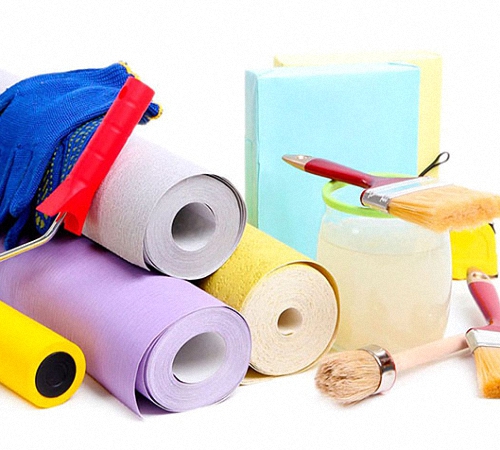
Choose glue for gluing wide wallpaper
When choosing glue glue first of all, pay attention to the type of wallpaper used. In the ratio with the composition, we distinguish three main types of substances included in any glue:
- starch and cellulose;
- Polymer vinyl acetates - non -toxic compositions, without an unpleasant odor, are distinguished by good adhesive characteristics;
- Bactericides, fungicides - prevent the appearance of fungus and mold, have excellent antiseptic characteristics.
Several types of wallpaper glue are distinguished:
1. Universal compositions.
Contains the basis of antifungal substances. Most often used for paper wallpaper. Although, according to the manufacture of the manufacturer, it is used for almost all varieties of wallpaper.
2. Special adhesive compounds.

Contains the basis, PVC and bactericides. Suitable for metallized, non -woven, laminated and textile options.
3. Glue for fiberglass wallpaper.
It differs in a large number of polymers in the composition.
When choosing wallpaper glue, decide on the type of wallpaper used. Most often, wide wallpapers have a paper or non -woven base. Quality glue should have such characteristics:
- the presence of bactericidal additives;
- high adhesion with the surface;
- moisture resistance;
- lack of unpleasant odor;
- Health safety.
The area of \u200b\u200bwalls that will be covered with wallpaper determines the amount of glue. Two, three rolls of wide wallpaper will require about 250 grams of glue powder. More information is in the instructions from the manufacturer.
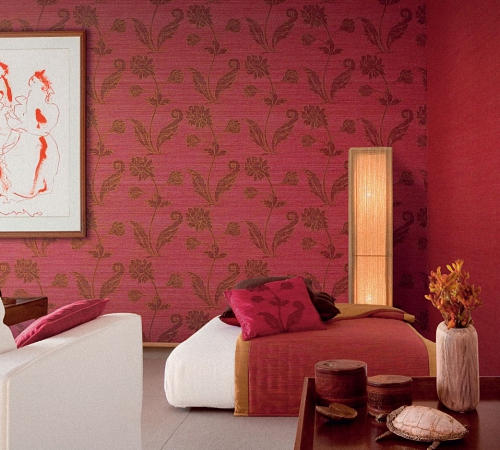
We glue wide woven wallpapers
After choosing glue and preparing the walls, proceed to gluing wallpaper. Overnight wallpaper requires special adhesive composition.
Step -by -step instructions for the installation of wide wallpapers:
1. Prepare the walls for work. They should be perfectly even and covered with a primer.
2. Close all windows, doors. The presence of a draft in the room is unacceptable. It is allowed to open the windows only after the glue dries completely, after 2-3 days. Dismantle the outlets and switches.
3. Measure the required length of the canvas and cut it with a clerical knife.
4. Prepare the glue for work. Sprinkle the glue to the previously prepared container with water, stirring it evenly. Apply the adhesive composition to the canvas, wait 10-15 minutes, depending on the type of glue.
5. Mark the wall before gluing wallpaper. For these purposes, use a pencil and level.
6. Apply glue to the wallpaper, having previously mixed it. Set the canvas on the wall, using ironing and rags, get rid of air bubbles.
7. After thorough smoothing, cut the wallpaper above and below using a knife and a spatula.
8. Set the second canvas with the previous one. The joints between the wide wallpaper are ironed with a special spatula.
9. The option of gluing canvases with overlap is possible. In this case, the level is applied to the wall and cut a flat line, the excess wallpaper is removed, and the joint is perfectly even.

10. Playing walls with wide wallpaper - a complex process. Pay special attention to corner areas. The canvases in the corners are installed with an overlap of 20-30 mm.
11. If the angles in the room are perfectly smooth, then the option of gluing wallpaper with a small overlap and their further trim is possible.
Keep in mind that the wallpaper with a pattern is more difficult to glue, since they need thorough docking. In addition, purchase such material with a margin of 15-20%.
In order to prevent wallpaper pollution, we recommend that you pre -lay a polyethylene film on the floor. Roll up the rolls sequentially, always with one side.
If glue gets on the wallpaper or on the ceiling, remove it with a damp rag. It should always be at your fingertips. Keep in mind that the quality of the installation of the first canvas directly determines the entire further course of the work. Wallpaper with a deep textured pattern is ironed with a rag, as there is a risk of damage to their roller.
Video on the installation of wide wallpaper:

there is something to learn. Well done
there is something to learn. Well done